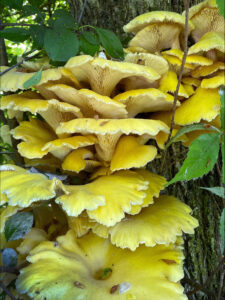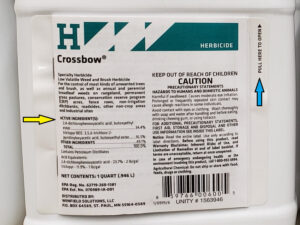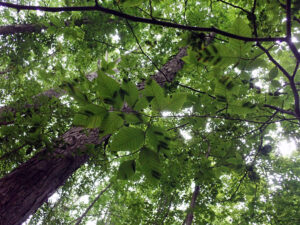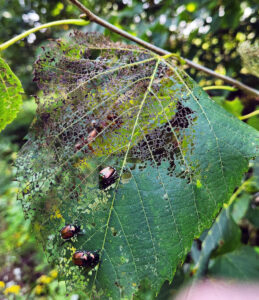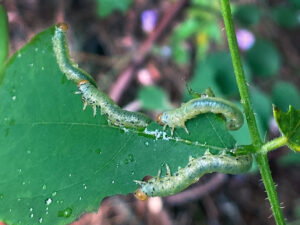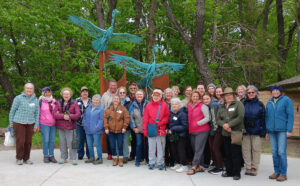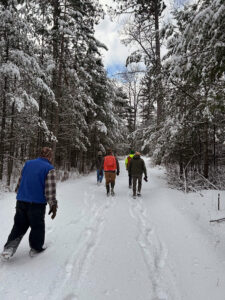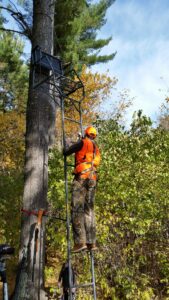
A Wisconsin hunter climbs into his tree stand. The Wisconsin Department of Natural Resources urges hunters to avoid placing their stands on or near ash trees because the trees may experience breakage of stems or branches due to damage from the emerald ash borer. / Photo Credit: Wisconsin DNR
By Wisconsin DNR
It’s time for deer hunters to begin scouting properties to identify potential locations for their deer stands this hunting season.
The Wisconsin Department of Natural Resources (DNR) cautions hunters to avoid placing deer stands in or near ash trees – a practice that presents a clear safety hazard.
Most ash trees in the southern two-thirds of Wisconsin are dead or dying due to the emerald ash borer (EAB), and infestations in the northern part of the state are rapidly expanding. Some areas already experience decline and mortality of ash trees. EAB has been confirmed present in all 72 Wisconsin counties, and unreported infestations are also likely to be present.

